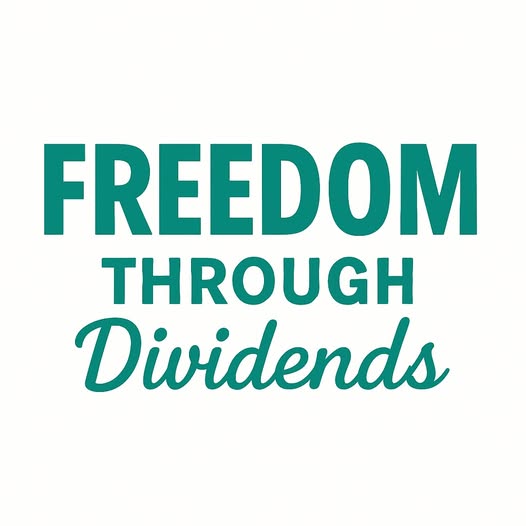Are you searching for a steady way to earn passive income and reach your financial goals? You’re not alone. Many investors are using ETF investing strategies to grow their wealth and secure their future.
Yield ETFs give investors a chance to diversify their income streams and grow their wealth over time. By investing in a mix of income-generating assets, you can create a steady income. This income supports your financial goals.
Key Takeaways
- Yield ETFs can provide a steady stream of income to support long-term financial goals.
- ETF investing strategies can help diversify your portfolio and reduce risk.
- Wealth-building ETFs offer a unique opportunity for investors to grow their wealth over time.
- Investing in yield ETFs can be a reliable way to generate passive income.
- A diversified portfolio of income-generating assets can help secure your financial future.
What Are Yield ETFs and How Do They Work?
Yield ETFs mix income and diversification for investors. They’re popular for those wanting regular income without managing stocks or bonds themselves.
Definition and Basic Mechanics
Yield ETFs are funds that give investors income through different strategies. They invest in a mix of dividend-paying stocks, bonds, or real estate investment trusts (REITs). This way, they pool money from many investors, reducing risks.
How Yield ETFs Generate Income
Yield ETFs make money mainly through dividend distributions and interest payments.
Dividend Distributions
Many yield ETFs focus on dividend ETFs. They invest in companies that pay consistent dividends. These dividends go to the ETF’s shareholders, giving them regular income.
Interest Payments
Some yield ETFs make money from bonds or debt securities. They earn interest, which is then given to investors regularly.
Yield ETFs vs. Traditional Growth ETFs
Yield ETFs differ from growth ETFs, which aim for capital growth. Yield ETFs are great for those wanting steady returns, like retirees. They help investors add income to their portfolios.
Growing Wealth with Yield ETFs: Core Strategies
To grow your wealth, it’s important to know the key strategies for yield ETFs. By using the right methods, you can boost your ETF portfolio growth and reach your financial goals.
Compounding Through Dividend Reinvestment
One top strategy is compounding via dividend reinvestment. Reinvesting dividends can greatly increase your returns over time. This method turns your investments into a powerful tool for building wealth.
Income Harvesting Approaches
Yield ETFs have different income harvesting approaches for your needs. You can pick from ETFs that focus on dividend stocks, bonds, or other income assets. Choosing the right mix can create a steady income stream or help grow your wealth.
Balancing Growth and Income
It’s key to balance growth and income with yield ETFs. While income is the main goal, growth is also important. Finding the right balance ensures your investments meet your long-term goals.
The Total Return Perspective
When looking at yield ETFs, consider the total return perspective. This view includes both income and capital growth. It helps investors see the real performance of their investments and make better choices.
Inflation Protection Considerations
Inflation protection is vital when investing in yield ETFs. Some ETFs, like those in Treasury Inflation-Protected Securities (TIPS) or real estate, can protect against inflation. Adding these to your portfolio can help keep your purchasing power steady over time.
By using these core strategies, you can grow your wealth with yield ETFs and secure a better financial future. Whether you aim for passive income generation or the best ETFs for income, knowing these strategies is crucial for maximizing your investment.
Types of Yield ETFs for Your Investment Portfolio

Exploring Yield ETFs opens up a world of investment choices. These options cater to various financial goals and risk levels. They provide income through different asset classes, making them flexible for investors.
Dividend ETFs
Dividend ETFs focus on stocks that pay dividends. This offers a steady income stream. There are sub-types for different investment strategies.
High-Dividend Yield ETFs
These ETFs invest in stocks with high dividend yields. They attract investors seeking income, especially in low-interest-rate times.
Dividend Growth ETFs
Dividend Growth ETFs target companies with a history of increasing dividends. They aim to offer income and potential for growth.
- Regular Income: Dividend ETFs provide a steady stream of income through dividend payments.
- Diversification: They allow investors to diversify by investing in a wide range of dividend-paying stocks.
- Potential for Growth: Some dividend ETFs focus on companies with a history of dividend growth, offering potential for capital appreciation.
Bond ETFs
Bond ETFs invest in fixed-income securities. They provide another way to generate yield.
Government Bond ETFs
Government Bond ETFs hold securities issued by governments. They are seen as low-risk investments. They are good for those looking to minimize credit risk.
Corporate Bond ETFs
Corporate Bond ETFs invest in bonds issued by companies. They offer higher yields than government bonds but have higher credit risk.
Real Estate Investment Trust (REIT) ETFs
REIT ETFs offer exposure to the real estate market without owning physical properties. They provide a steady income stream through rental income and property sales.
Preferred Stock ETFs
Preferred Stock ETFs invest in preferred shares. They have a higher claim on assets and dividends than common stocks. They offer a balance between bond stability and equity-like returns.
Understanding the different types of Yield ETFs helps you make informed decisions. This way, you can build a diversified investment portfolio that meets your financial goals.
How to Evaluate and Select the Right Yield ETFs
Choosing the right Yield ETF requires a close look at its yield, costs, and past performance. It’s important to know what makes a Yield ETF good for your investment goals. This includes its yield metrics, costs, and how it has done in the past.
Understanding Key Yield Metrics
Yield metrics are key when picking Yield ETFs. You should look at SEC Yield and Distribution Yield.
SEC Yield vs. Distribution Yield
The SEC Yield shows the ETF’s income over 30 days. The Distribution Yield is about recent dividends. Knowing these differences helps you see if the ETF can keep up its income.
Yield Sustainability Indicators
To see if an ETF’s yield can last, check the dividend coverage ratio and underlying holdings. These tell you if the ETF’s yield is likely to stay strong.
Analyzing Expense Ratios and Costs
The expense ratio is very important when picking Yield ETFs. A lower ratio means more money in your pocket. Don’t forget to look at trading fees and taxes too.
| ETF | Expense Ratio | SEC Yield |
|---|---|---|
| ETF A | 0.10% | 4.2% |
| ETF B | 0.20% | 4.5% |
| ETF C | 0.05% | 4.0% |
Assessing Historical Performance and Stability
Looking at an ETF’s past performance is key. It shows if the ETF is stable and might grow in the future. Choose ETFs with a steady track record and low ups and downs.
Examining Holdings and Sector Exposure
It’s crucial to know what an ETF holds and where it invests. This helps you see its risk and if it can make income. Make sure the ETF fits your goals and how much risk you can take.
Step-by-Step Guide to Purchasing Your First Yield ETF
Investing in yield ETFs is a great way to increase your passive income generation. It’s a stable investment option.
Setting Up a Brokerage Account
The first step is to open a brokerage account if you don’t have one. Pick a reputable online brokerage with low fees and an easy-to-use platform. Think about customer service, mobile app, and educational resources when choosing.
Researching and Selecting Appropriate ETFs
After setting up your account, look for yield ETFs that match your goals. Find ones with stable ETF portfolio growth and low costs. Use online tools to compare ETFs by their holdings, yield, and past performance.
Executing Your First Purchase
Once you’ve picked a yield ETF, it’s time to buy. You can use a market order or a limit order.
Market Orders vs. Limit Orders
A market order buys at the current price right away. A limit order lets you set a price to buy. Know the difference before you decide.
Setting Up Dividend Reinvestment Plans (DRIPs)
To get the most from your dividend reinvestment, set up a DRIP. It automatically reinvests your dividends. This grows your investment over time without you needing to do anything.
Building a Diversified Yield ETF Portfolio
Diversification is key for a yield ETF portfolio that can handle market ups and downs. A diversified portfolio helps manage risk and can increase returns over time.
Asset Allocation Models for Income Investors
Asset allocation is crucial for a diversified yield ETF portfolio. Income investors spread their assets across bonds, stocks, and real estate. This balance aims for the right mix of risk and return.
For example, a conservative investor might put 60% in bond ETFs, 30% in stock ETFs, and 10% in real estate ETFs.
Sector Diversification Strategies
Sector diversification means investing in different sectors to avoid risks. For yield ETFs, this could include technology, healthcare, finance, and consumer goods. This way, you can protect against downturns in specific sectors.
Geographic Diversification Considerations
Geographic diversification is also key for yield ETF investors. Investing in ETFs from different regions, like the U.S., Europe, and Asia, reduces risk. It helps smooth out returns over time.
Risk Management Through Diversification
Diversification helps manage risk. By investing in various asset classes, sectors, and geographies, you lower your portfolio’s risk. Different investments react differently to economic events, balancing your portfolio’s performance.
Correlation Analysis
Correlation analysis measures how investments move together. Understanding these relationships helps build a resilient portfolio. A good portfolio mixes investments with low correlation to each other.
Volatility Management
Volatility management aims to reduce portfolio value fluctuations. Diversifying across different asset classes with varying volatility can achieve this. For example, combining high-yield bond ETFs with stable government bond ETFs can manage volatility.
| Asset Class | Typical Volatility | Yield Potential |
|---|---|---|
| Government Bonds | Low | Low-Moderate |
| Corporate Bonds | Moderate | Moderate-High |
| Stocks | High | High |
By considering asset allocation, sector diversification, geographic diversification, and risk management, you can create a diversified yield ETF portfolio. This portfolio is well-positioned to meet your long-term financial goals.
Tax-Efficient Strategies for Yield ETF Investors
To get the most out of your yield ETF investments, it’s essential to implement tax-efficient strategies. Yield ETFs can be highly tax-efficient investment vehicles. But, understanding how to manage their tax implications is crucial for maximizing your returns.
Understanding ETF Tax Advantages
ETFs are generally considered tax-efficient. This is because they avoid the capital gains distributions that mutual funds often make. They do this by not selling securities to meet investor redemptions, thus minimizing capital gains realizations.
Tax Treatment of Different Income Types
The tax treatment of yield ETFs depends on the type of income they generate. Understanding these differences is key to optimizing your tax strategy.
Qualified vs. Non-Qualified Dividends
Dividends from ETFs that invest in stocks can be classified as qualified or non-qualified. Qualified dividends are taxed at a lower rate, similar to long-term capital gains. This is provided certain holding period requirements are met.
Interest Income Taxation
Interest income from bond ETFs is taxed as ordinary income. This can be less favorable than the tax treatment of qualified dividends.
Strategic Account Placement
Where you hold your yield ETFs can significantly impact your tax liability. Strategic account placement involves choosing the right type of account for your investments.
Taxable vs. Tax-Advantaged Accounts
Holding tax-inefficient investments, such as bond ETFs, in tax-advantaged accounts like IRAs can help minimize your tax burden. Conversely, placing tax-efficient investments, like stock ETFs with low turnover, in taxable accounts can be beneficial.
Tax-Loss Harvesting Opportunities
Tax-loss harvesting involves selling securities that have declined in value to realize losses. These losses can then be used to offset gains from other investments. This strategy can be particularly effective in a taxable brokerage account.
Here’s an example of how tax-loss harvesting can work:
| Investment | Original Cost | Current Value | Gain/Loss |
|---|---|---|---|
| ETF A | $10,000 | $8,000 | -$2,000 |
| ETF B | $5,000 | $6,000 | $1,000 |
By selling ETF A, you can realize a $2,000 loss. This loss can be used to offset the $1,000 gain from ETF B. This results in a net taxable gain of $0, and potentially saving on taxes.
Common Mistakes to Avoid When Investing in Yield ETFs
To get the most from Yield ETFs, it’s important to steer clear of common errors. Investors often make mistakes that can hurt their returns.
Yield Chasing Without Due Diligence
One big mistake is chasing high yields without doing your homework. High-yielding ETFs might look good at first, but they can be risky. Always check the underlying assets, the ETF’s strategy, and its past performance.
Ignoring Total Return in Favor of Yield
Just focusing on yield can be a mistake. Total return includes income and any gains or losses. Missing this can give you a skewed view of your investment’s success.
Overlooking Sector Concentration Risks
Some Yield ETFs focus too much on one sector, which can be risky. For example, a real estate ETF might be hit hard by interest rate changes. Spreading your investments can help reduce these risks.
Neglecting to Monitor Distribution Sources
It’s key to know where an ETF’s distributions come from. Some might be returns of capital, not income, which affects taxes. Keeping an eye on these sources helps you make better choices.
Failing to Adjust for Changing Market Conditions
Yield ETFs can change with the market. Not adjusting your strategy to changes in interest rates or the economy can hurt your returns.
| Common Mistake | Potential Impact | Mitigation Strategy |
|---|---|---|
| Yield Chasing | Investing in risky ETFs | Conduct thorough research |
| Ignoring Total Return | Incomplete performance picture | Monitor total return |
| Sector Concentration | Increased risk | Diversify across sectors |
| Neglecting Distribution Sources | Unexpected tax implications | Monitor distribution sources |
| Failing to Adjust | Suboptimal performance | Adjust strategy with market conditions |
Monitoring and Optimizing Your Yield ETF Portfolio

To get the most from your yield ETF portfolio, it’s key to keep checking and tweaking it. This means watching important numbers, rebalancing, and adjusting to changes in interest rates and the economy.
Essential Metrics to Track Regularly
Keeping an eye on your yield ETF portfolio is crucial. You should track yield, expense ratios, and past performance.
| Metric | Description | Importance |
|---|---|---|
| Yield | The income return on investment. | High |
| Expense Ratio | The cost of managing the ETF. | Medium |
| Historical Performance | Past returns of the ETF. | High |
When and How to Rebalance Your Portfolio
Rebalancing keeps your investment mix right. It means checking your portfolio and tweaking the mix of your investments.
“Rebalancing is a disciplined investment strategy that helps manage risk and potentially improve long-term returns.”
Adapting to Interest Rate Changes
Changes in interest rates can really sway yield ETFs. Knowing how these changes affect your investments is key for smart choices.
Adjusting Your Strategy Through Economic Cycles
Economic cycles can change how yield ETFs do. Tweaking your strategy to fit these cycles can boost your returns.
Recession-Resistant Yield Strategies
In tough economic times, some yield ETFs hold up better. Focusing on sectors like utilities or consumer staples can offer stability.
Growth Phase Adjustments
In times of growth, tweaking your yield ETF portfolio to include sectors ready to grow can increase your earnings.
Conclusion: Maximizing Your Long-Term Success with Yield ETFs
Yield ETFs can be a key part of your long-term financial plan. They help you understand how to make the most of these investments. By picking the right ones and spreading out your investments, you can grow your wealth.
Yield ETFs are great for earning regular income and can help reduce risk. They fit well into a plan to build wealth. Using smart strategies like dividend reinvestment and tax efficiency can boost your earnings.
To get the most out of yield ETFs, stay up to date with market news. Keep an eye on your investments and tweak your strategy when needed. This will help you reach your financial goals and secure a better future.
FAQ
What are yield ETFs, and how do they generate income?
Yield ETFs are special funds that give investors income. They use different strategies, like investing in stocks that pay dividends or bonds. This income comes from dividends, interest, or other assets.
How do I choose the right yield ETF for my investment goals?
To pick the right ETF, look at its assets, yield, and costs. Also, check its past performance and what sectors it covers. Make sure it fits your investment goals, risk level, and how long you plan to hold it.
What is the difference between SEC yield and distribution yield?
SEC yield shows an ETF’s income over 30 days. Distribution yield shows total income over a year, divided by its value. Knowing both helps understand an ETF’s income better.
Can yield ETFs be used for long-term wealth growth?
Yes, they can help grow your wealth over time. Especially when you reinvest dividends or use other strategies. They offer a steady income and might be less volatile than growth investments.
How do I monitor and adjust my yield ETF portfolio over time?
Keep an eye on yield, total return, and costs. Rebalance your portfolio to match your goals. Adjust your strategy as the market or your finances change.
What are some common mistakes to avoid when investing in yield ETFs?
Avoid chasing high yields without checking them out. Don’t just look at yield, but also total return. Watch out for risks in certain sectors and ignore distribution sources. Always be ready to adjust for market changes.
Are yield ETFs suitable for tax-advantaged accounts?
Yes, they’re good for accounts like IRAs or 401(k)s. They can help reduce taxes in taxable accounts. Place them in tax-advantaged accounts to get the most after-tax returns.
How do yield ETFs contribute to a diversified investment portfolio?
They add variety by investing in different areas. This can lower risk in your portfolio. Adding yield ETFs makes your portfolio more balanced and strong.

